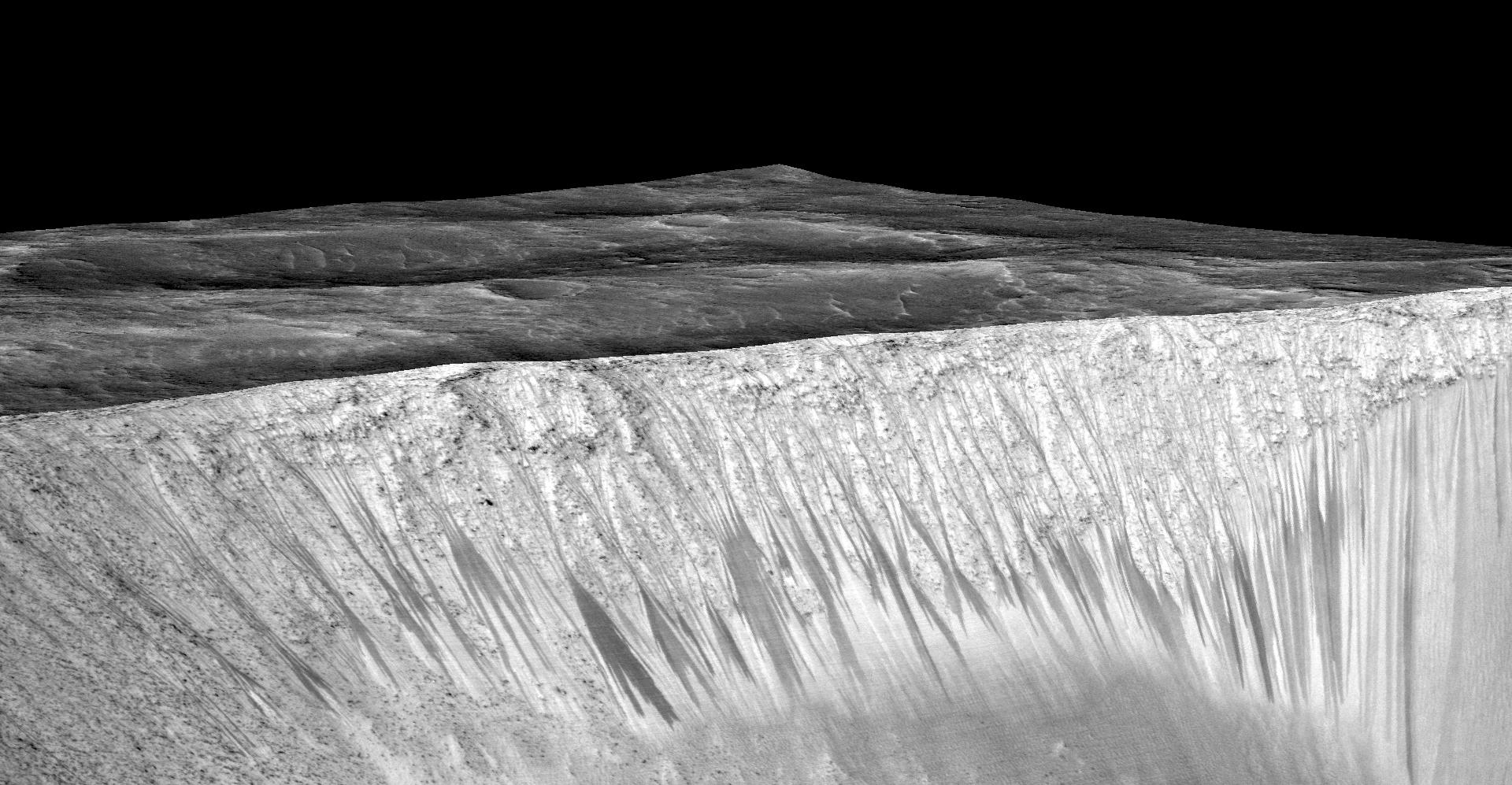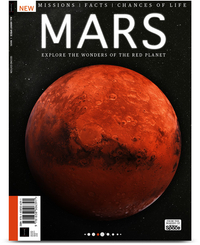Intriguing dark streaks on Mars may be caused by landslides after all
Subsurface chemistry could be driving the landslides.

Martian landslides might help explain mystery lines seen on the surface of the Red Planet, a new study finds.
For years, scientists analyzing the Martian surface have detected clusters of dark, narrow lines that seasonally appear on steep, sun-facing slopes in the warmer regions. Previous research has suggested that these enigmatic dark streaks, called recurring slope lineae (RSL), are signs that salty water regularly flows on the Red Planet during its warmest seasons.
Recent missions to Mars have revealed that the planet does possess huge underground pockets of ice. Prior work suggested that warmer temperatures during the Martian spring and summer could help generate salty brines capable, at least for a time, of staying liquid in the cold, thin air of the Red Planet.
Book of Mars: $22.99 at Magazines Direct
Within 148 pages, explore the mysteries of Mars. With the latest generation of rovers, landers and orbiters heading to the Red Planet, we're discovering even more of this world's secrets than ever before. Find out about its landscape and formation, discover the truth about water on Mars and the search for life, and explore the possibility that the fourth rock from the sun may one day be our next home.
Related: The search for water on Mars in pictures
However, geologists have discovered problems with the concept of brines causing RSL, explained study lead author Janice Bishop, a planetary scientist at the SETI (Search for Extraterrestrial Intelligence) Institute and NASA Ames Research Center, both of which are in California's Silicon Valley. For example, the angle of slopes where RSL occur and the features surrounding where they start "largely are inconsistent with a liquid flow process," she told Space.com.
Now Bishop and her colleagues suggest that chemical reactions could make the Martian surface vulnerable to landslides that might explain RSL.
"Although the surface of Mars today is dry and harsh and cold and dominated by wind and abrasion, underneath the surface, micro-scale interactions of salts with tiny ice and liquid water particles can be still occurring today," Bishop said.
Get the Space.com Newsletter
Breaking space news, the latest updates on rocket launches, skywatching events and more!
The scientists focused on chemical reactions between sulfate minerals such as gypsum with chloride salts, of which table salt is one variety. "On Earth, interactions between gypsum and chloride salts have caused collapse of parts of caves, sinkholes in soft sediments near salty lakes and ponds, and uplift of roads," Bishop said.
The researchers speculated that similar interactions could happen on Mars, although the cold and dry conditions there would slow these reactions down. "I am super excited about the prospect of active chemistry below the surface on Mars, albeit at a slow rate," Bishop said.
In the new study, the scientists conducted lab experiments on mixtures of sulfates, chloride salts, tiny ice particles and volcanic ash similar to Martian soil. They froze and thawed such mixtures at the kinds of low temperatures found on the Red Planet.
The researchers found thin films of slushy water formed on the surfaces of the mineral grains. They suggested these films could expand and contract over time, leading to upheavals and contractions under the Martian surface. Wind and dust on these unstable surfaces could then set off landslides, producing the lines seen on the Red Planet, Bishop explained.
The scientists noted that in the future, surface missions on Mars to recent RSL sites could help test their model. They detailed their findings online today (Feb. 3) in the journal Science Advances.
Follow us on Twitter @Spacedotcom or Facebook.
Join our Space Forums to keep talking space on the latest missions, night sky and more! And if you have a news tip, correction or comment, let us know at: community@space.com.

Charles Q. Choi is a contributing writer for Space.com and Live Science. He covers all things human origins and astronomy as well as physics, animals and general science topics. Charles has a Master of Arts degree from the University of Missouri-Columbia, School of Journalism and a Bachelor of Arts degree from the University of South Florida. Charles has visited every continent on Earth, drinking rancid yak butter tea in Lhasa, snorkeling with sea lions in the Galapagos and even climbing an iceberg in Antarctica. Visit him at http://www.sciwriter.us










